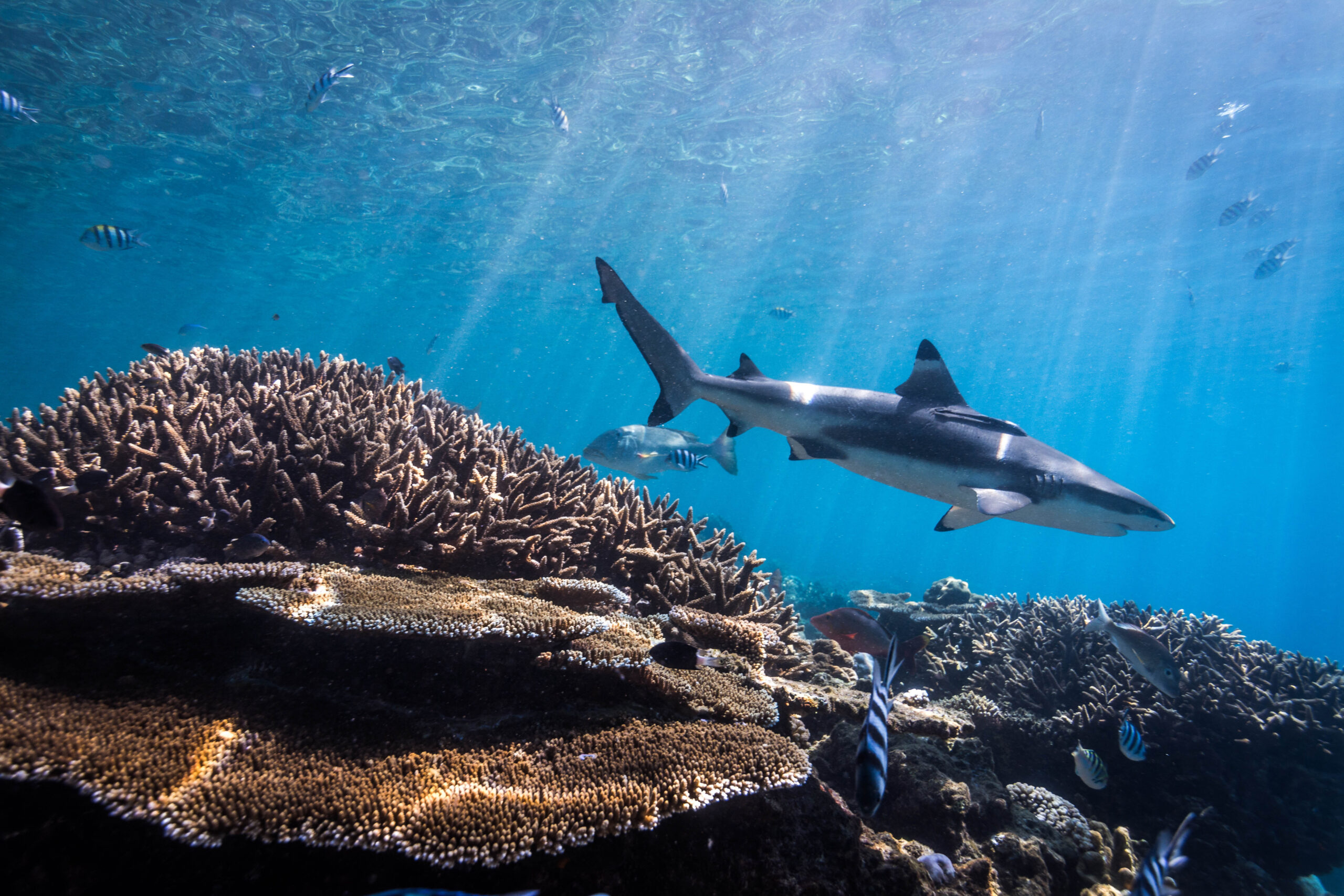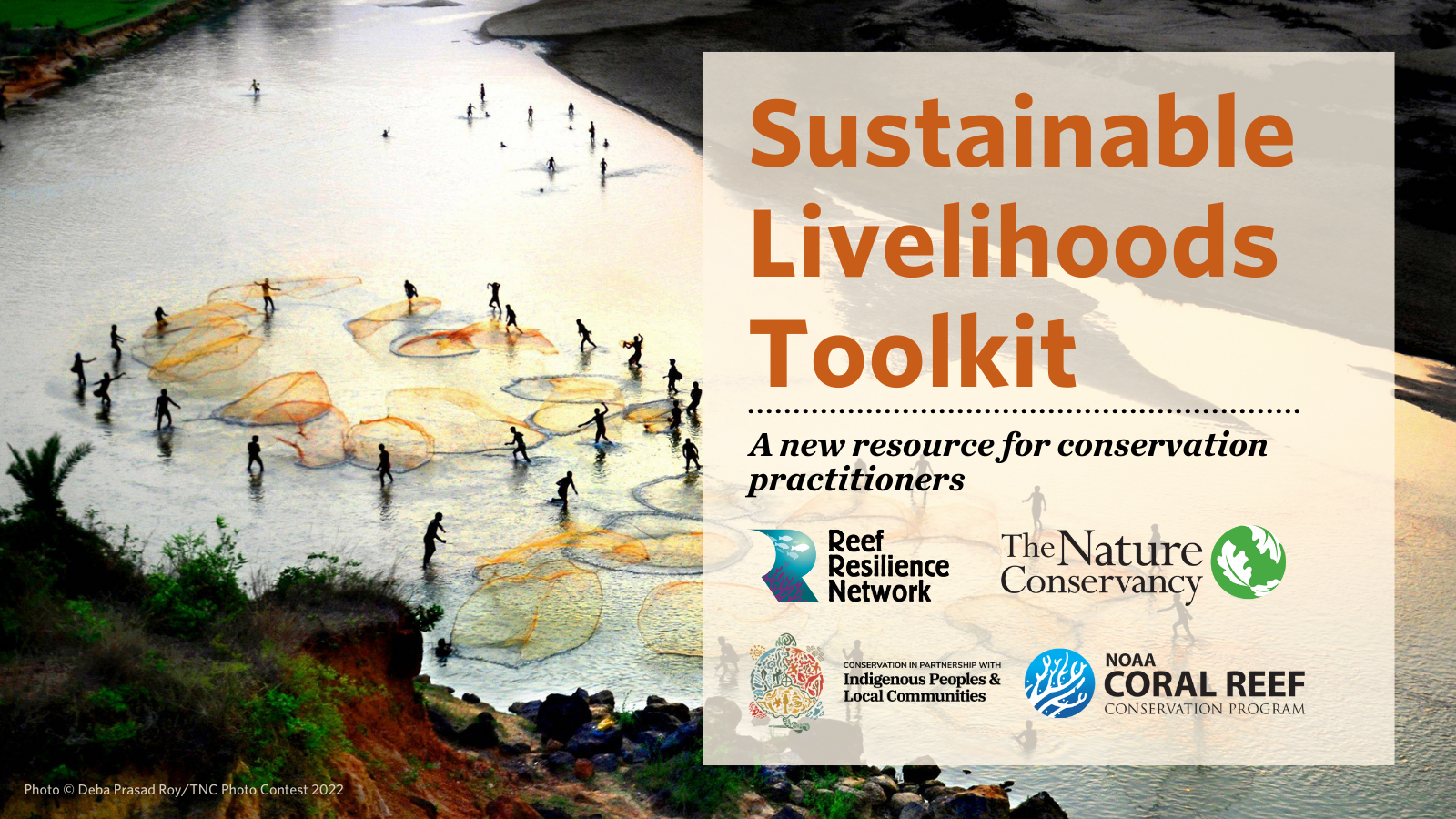Financing Protected Areas in Palau
Location
Palau
The challenge
The Republic of Palau is an archipelago made up of about 340 islands, islets, and atolls in the Micronesia region of the Pacific Ocean. Only eight of the islands are inhabited, with a population of approximately 18,000.ref
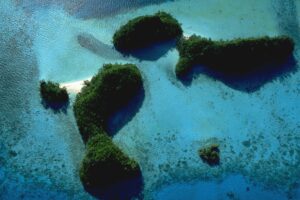
Aerial view of Kmekumer, Rock Islands, Republic of Palau. Photo © Jez O’Hare
Palau’s coral reefs are considered to be one of the “Seven Underwater Wonders of the World” with one of the most biologically diverse underwater environments on earth.ref Palau’s terrestrial biodiversity is also the most diverse in the Micronesia region, and Palau boasts one of only four mixed cultural and natural UNESCO World Heritage sites (Rock Islands Southern Lagoon). Protecting natural resources is a focal point of the culture and history of Palau.
Historically, Palau’s state governments, local chiefs/traditional leaders, and individuals independently protected ecologically significant areas within their boundaries. Global and local environmental threats, such as the coral bleaching event of 1998, along with increased illegal fishing and poaching, and substantially increased tourism made it increasingly difficult to rely on traditional knowledge and governance structures to protect Palau’s fragile environments.
To ensure protection of Palau’s rich biodiversity, Palau developed the Protected Areas Network (PAN) in 2003, a countrywide system of connected marine and terrestrial protected areas (see this case study for more information about development of the PAN). To sustain the PAN, a financing mechanism was needed to support effective management of designated protected areas.
Actions taken
Establishing a Green Fee
Recognizing the need for a financing mechanism to support the PAN, then-Congressman Noah Idechong, a devoted champion of conservation in Palau, established a committee of environmental and finance experts. The committee was tasked with identifying funding for the legislation, developing a framework for nominating sites to join the PAN, and determining how sites would access funding. Working with The Nature Conservancy, the committee designed a sustainable funding mechanism, a “Green Fee,” by which tourists who visit Palau would pay to provide support for management of protected areas. The tourism industry and other leaders in Palau were concerned that the fees would make Palau an expensive destination. It took many years and perseverance to overcome this opposition and pass the legislation that authorized the Green Fee. The Nature Conservancy assisted with a survey to determine visitors’ willingness to pay to protect the pristine environment in Palau. The survey results demonstrated support for the funding mechanism and helped inform the initial Green Fee amount.
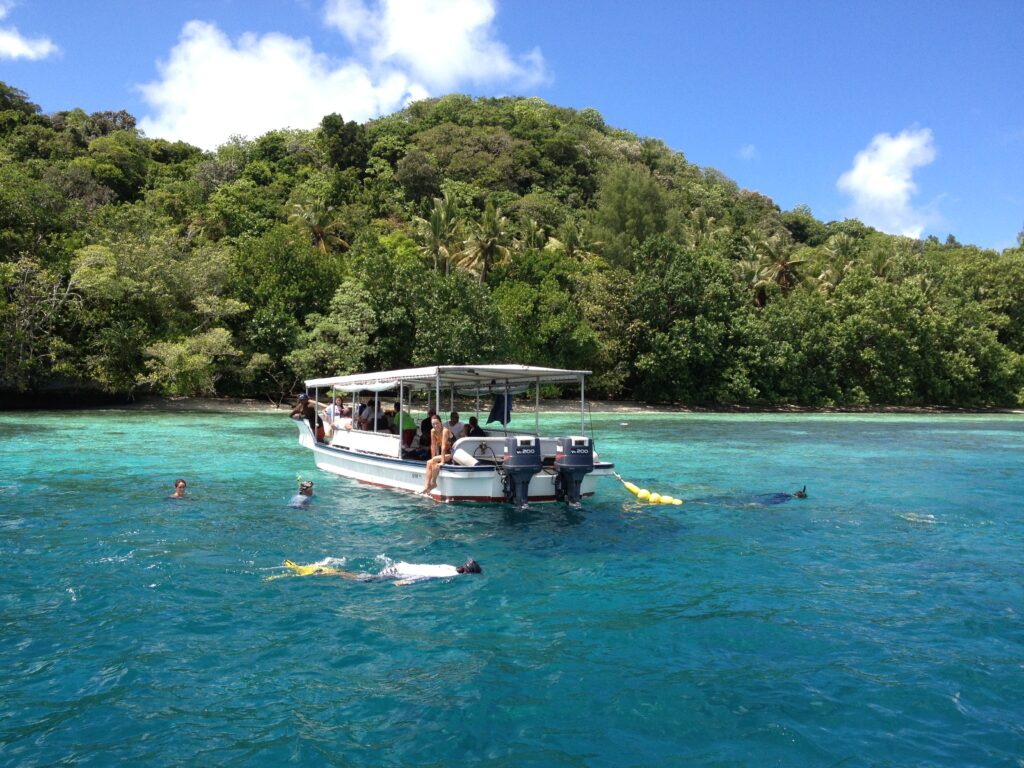
Tourists snorkeling in Palau. Photo © The Nature Conservancy
In 2006, the revised PAN Act established a $30 Green Fee to be collected from all visitors to the island, of which $15 would go to directly support the PAN. The collection of the Green Fee from all visitors to Palau began in 2008. Green Fee collections were combined with the existing departure tax already being collected by the government. Importantly, the legislation did not preclude states or protected areas from charging separate fees for visits to sites. This financing approach leveraged Palau’s popularity as a tourist destination to fund management of its protected areas and promote responsible tourism to its extraordinary marine sites.
As part of the revised PAN Act, the Protected Areas Network Fund (PAN Fund), a non-governmental organization, was established as a transparent, independent body to serve as a financial trustee for all monies collected to support the PAN. These funds included revenue collected through the Green Fee, Palau’s portion of investment in the Micronesia Challenge Endowment Fund, and any other donations or grants to PAN.
Pristine Paradise Environmental Fee
In 2018, Palau implemented a $100 Pristine Paradise Environmental Fee for all visitors, incorporating the $30 Green Fee. Half of each Green Fee collected goes to fund other environmental priorities such as water and sewer, while the other half goes to PAN Fund (i.e., $15 per visitor goes to PAN Fund). The money is remitted to PAN Fund on a quarterly basis, but PAN Fund is capped at receiving $2 million total in Green Fees annually.
The remaining $70 of the Pristine Paradise Environmental Fee is allocated as follows:
- $10 to Fisheries Protection Trust Fund
- $12.50 to state governments
- $25 to the security, operation, maintenance, and improvement of the Palau International Airport
- $22.50 to revert to the National Treasury
The Pristine Paradise Environmental Fee is collected by the airlines for visitors traveling by air, and by Customs for visitors arriving by sea. It is then remitted to the Republic of Palau Ministry of Finance, which is responsible for the collection, disbursement, and accounting of the Fee to the different subaccounts.
States receive funding for their sites from PAN Fund based on a formula and budgets that are established to implement management plans for each site. PAN Fund distributes money on a quarterly basis after they have received a quarterly technical and financial report from the site. To ensure transparency, PAN Fund hires an external auditor to conduct a financial and governance audit each year.
Raising Visitor Awareness
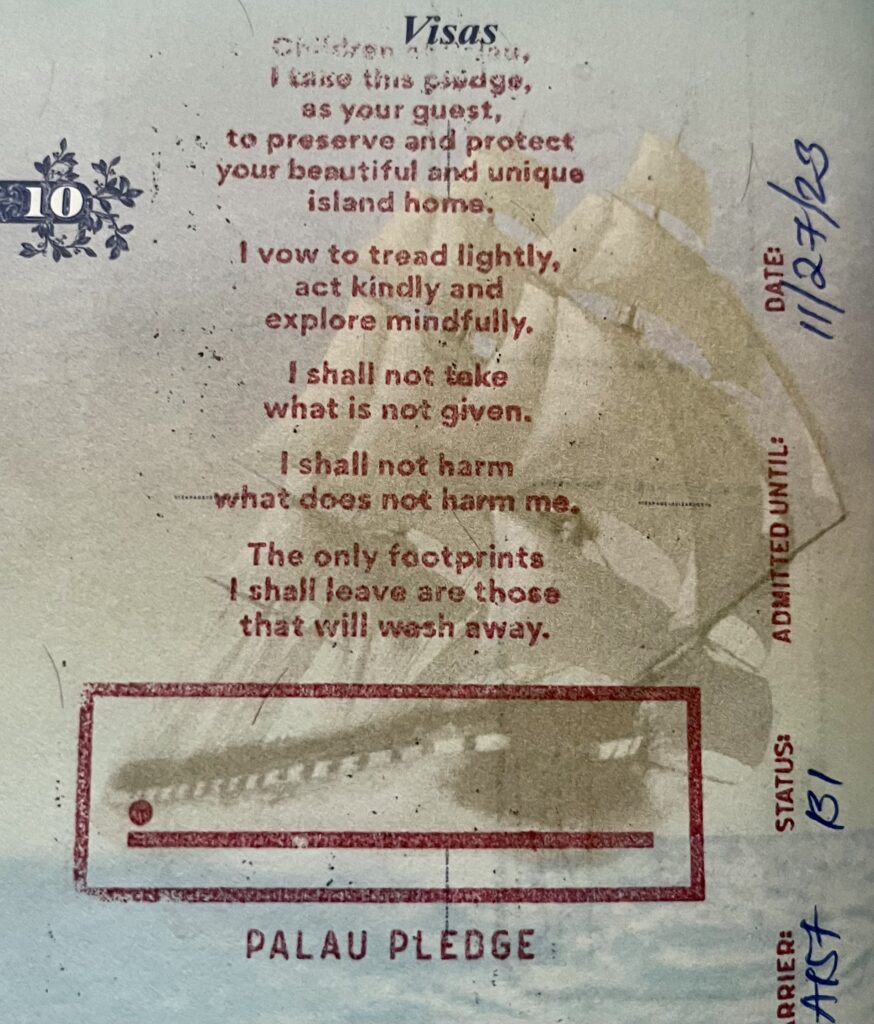
Palau pledge stamped into passport. Photo © Michelle Graulty
In concert with the Green Fee and the Pristine Paradise Environmental Fee, outreach and education efforts help inform visitors about the importance of conserving and protecting natural resources in Palau. The Palau Pledge, implemented by the Palau Visitors Authority, is stamped into each visitor’s passport. The pledge outlines vows the visitors make to the youth of Palau to look after the local environment and culture. In addition, a video is shown on all incoming flights to educate visitors about how to be environmentally responsible.ref As noted in a recent study of visitor green fee programs globally, “the tourism sector can act as an educator and liaison to foster pro-nature and culturally appropriate behaviors which may enhance visitors’ willingness to pay.”ref
How successful has it been?
Tourism is Palau’s biggest economic driver, contributing an estimated 40% of countrywide gross domestic product (GDP) in 2023. Tourist arrivals reached a record of 168,770 in 2015, prior to declining to 9,247 in 2022 due to the COVID-19 pandemic.ref As of April 2024, there have been almost 1 million pledges taken.ref
The Green Fee provides a valuable source of revenue generation for conservation priorities in Palau. Currently, funding from the Green Fee supports the management of 39 protected area sites (29 marine and 10 terrestrial) across all 16 states in Palau, with the PAN covering over 1,100 square kilometers. The Green Fee also supports PAN and PAN Fund operations, including 88 personnel and assets and supplies needed for the daily management of the PAN and PAN Fund programs and the PAN sites. ref PAN funding provides a source of sustainable and eco-friendly employment.
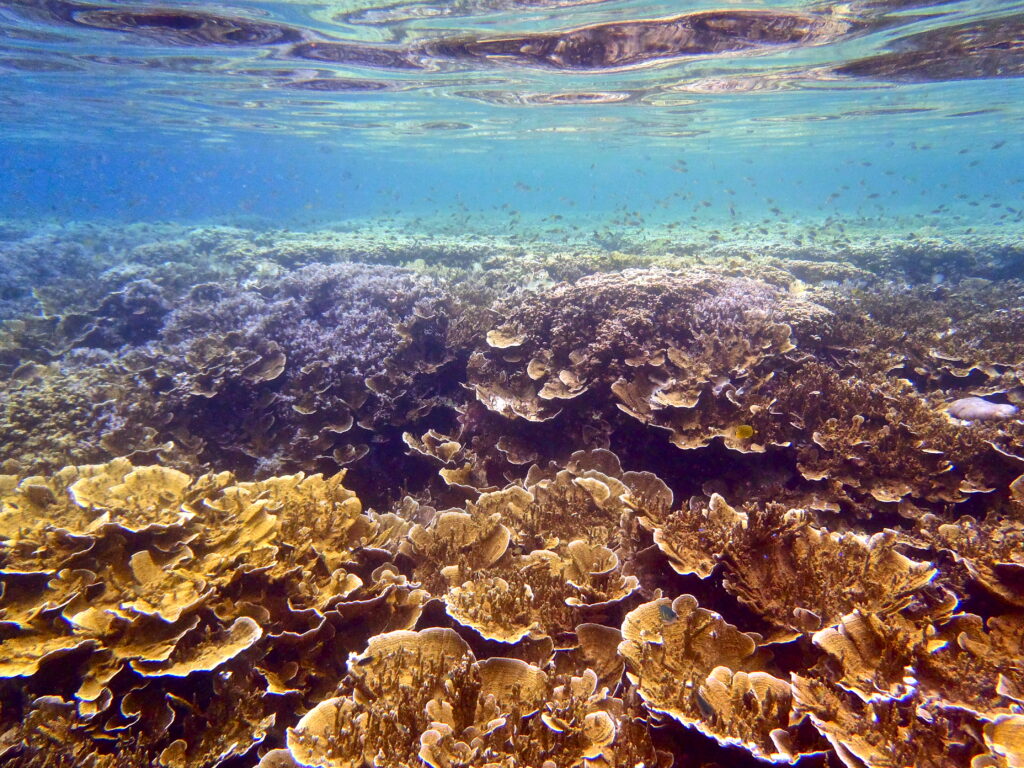
A coral reef in Palau. Photo © The Nature Conservancy
Between 2012 and 2019, the PAN Fund received more than $13 million in Green Fees. The bulk of this funding is provided to states to support implementation of PAN sites (60%), with 20% going to support the PAN Office and PAN Fund operations, and the remaining 20% split between the PAN Fund reserve fund, the emergency reserve fund, the Micronesia Challenge Endowment (a fund managed by the Micronesia Conservation Trust which Palau contributes to), and special projects funding. The PAN Fund reserve fund is intended to help with fluctuations in tourism arrivals, while the emergency reserve fund helps rehabilitate PAN sites affected by natural disasters.
Other ways the Green Fee supports conservation in Palau include:
- Funding a scholarship program. The PAN Capacity Building Scholarship, to support students who are interested in or already involved in the fields of science, conservation, or project management in Palau.
- Enabling continued funding for the operation of each PAN site. Budgets were reduced during the COVID-19 pandemic when tourism slowed, and the reserve fund ensured operations could continue.
- Creating an Investment Partnership Program with the PAN state members. Using green fees to match capital contributions provided by PAN member states encourages states to fund their own endowment programs. Four states are now co-investing with the PAN Fund, providing them with an additional source of sustainable financing.
- Allocating 5% of the Green Fee to the Micronesia Challenge Endowment. This enabled Palau to meet its contribution goals ($10 million) to fund the endowment.
Sustainable Finance Plan Findings
While Green Fee collections contribute substantial funding for managing and protecting the PAN sites, these collections are not sufficient to fully cover the operation of the PAN sites and investments in infrastructure. A Sustainable Finance Plan developed for PAN Fund by The Nature Conservancy in 2020 projected an average annual funding gap of $1 million over the next ten years. The Green Fee provides for approximately 58% percent of the funding needed to fully implement PAN management plans. Even with growth in tourism increasing Green Fee collections, the $2 million cap on the amount of the Green Fee allocated annually to PAN Fund constrains their ability to meet PAN funding needs through the Green Fee. The Micronesia Challenge Endowment, local appropriations, grants, and the PAN Reserve Fund help cover some of the shortfall; however, additional measures are needed to close the funding gap and further develop sustainable financing mechanisms to protect Palau’s expanding network of protected areas. The Sustainable Financing Plan (2020) includes additional financing ideas:
- Growing the Micronesia Challenge Endowment. The Sustainable Financing Plan estimates the Endowment will need to grow to at least $20 million to generate returns of over $1 million annually to support the PAN.
- Applying for funding from The Green Climate Fund and the Global Environment Facility (GEF).
- Implementing cost-saving measures such as:
- Improving processes to manage the PAN more effectively
- Cost sharing between PAN and states
- Reducing redundant costs
- Implementing network-level ecological and socio-economic monitoring
- Coordinating enforcement across the PAN to reduce the number of personnel required for effective enforcement
While PAN Fund needs to continue to raise more funds and/or cut costs to be able to cover all of the costs of the PAN, the Green Fee has provided substantial financial support and contributed to the establishment of a successful and growing network of protected areas in Palau.
Lessons learned and recommendations
Development of a green fee provides a solution for tourism-based jurisdictions such as Palau to generate funding for conservation, which otherwise would be difficult to prioritize in government budgets. However, to implement a green fund it is important to ensure clear communication to promote awareness:
- Leaders need to understand visitors’ willingness to pay for protecting pristine areas, and the impact of the proposed funding, so they can provide support.
- Visitors need to be made aware of what they are funding. The Palau pledge is a good example of strategic communications to visitors to promote awareness of the importance of conservation in the country and generate buy-in for paying the Green Fee.
- Leaders and the public need to understand the importance and implications of establishing and conserving protected areas.
Other lessons learned in implementing the Green Fee in Palau include:
- Until the Green Fee collections are established and put to use, it can be challenging to overcome political pressure from tourism interests concerned that green fees will make it an expensive destination. Being able to point to a survey illustrating visitors’ willingness to pay for protecting pristine areas is helpful to overcome this barrier.
- Having a local champion who can effectively work with stakeholders to introduce and advocate for ideas is important, especially if implementing green fees will require legislation. Noah Idechong worked tirelessly to raise awareness, meeting with fishermen, local chiefs, politicians, and others stakeholders to garner support for the PAN and the Green Fee.
- Establishing an independent legitimate body to collect the fees and administer the funds is important to ensure transparency.
- Integrating local and traditional knowledge can be very helpful for building understanding and support.
- The culture and history of Palau—based on the principles of conservation—was an ideal platform for the development of PAN and the Green Fee to support it.ref
A broader review of visitor green fee programs, including the Palau Green Fee, found that “key design elements such as public-private management structures and visitor engagement initiatives appear to drive better program performance and outcomes for visitor green fees and are notable elements for prospective jurisdictions considering establishing visitor green fee programs.”ref
Funding summary
The implementation of the Green Fee to finance management of protected areas in Palau was made possible through the efforts of the Palau Conservation Society and local communities, with support from The Nature Conservancy and the Government of the Republic of Palau.
Lead organizations
Palau Protected Areas Network Fund
Government of the Republic of Palau, Ministry of Finance
Partners
The Nature Conservancy
Palau Conservation Society
Resources
Case Study: Designing a Marine Protected Area Network in Palau
Financing conservation at scale via visitor green fees
Conservation financing for conservation programs with Indigenous Peoples and Local Communities

